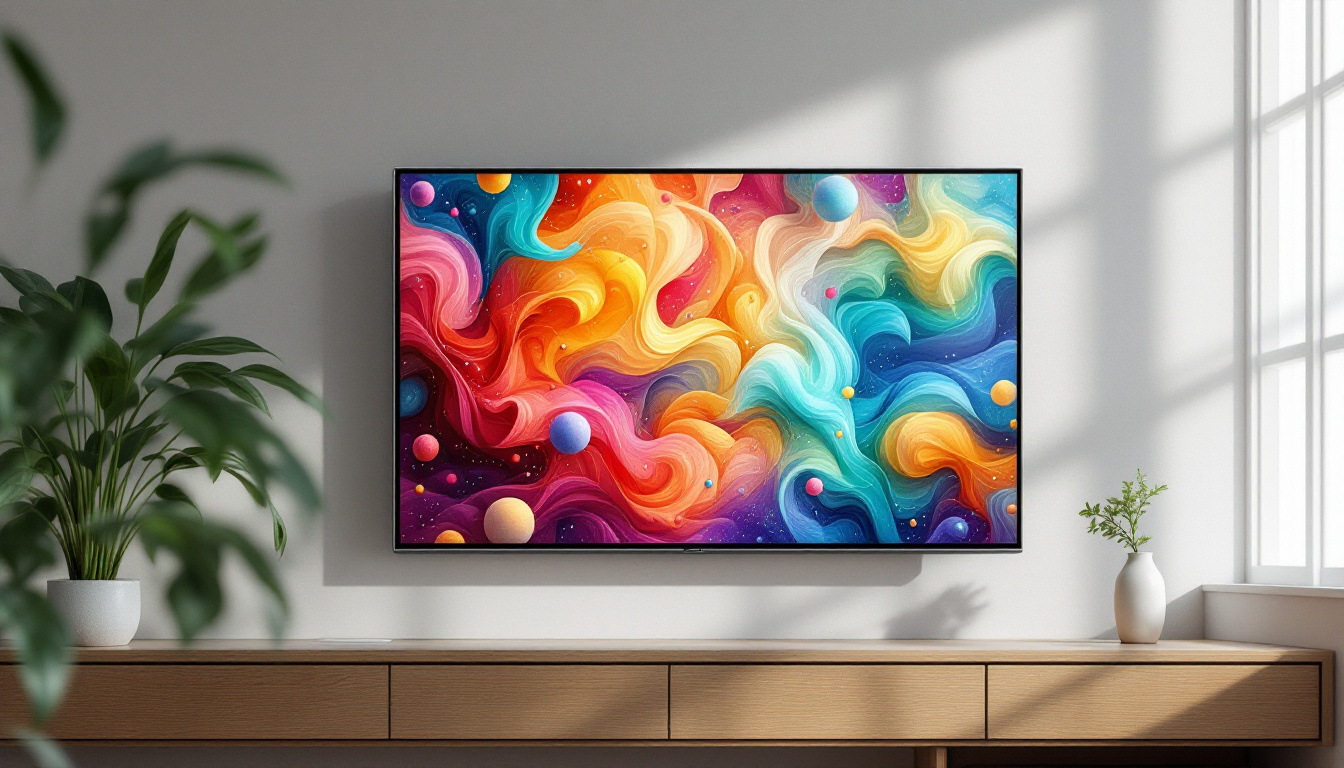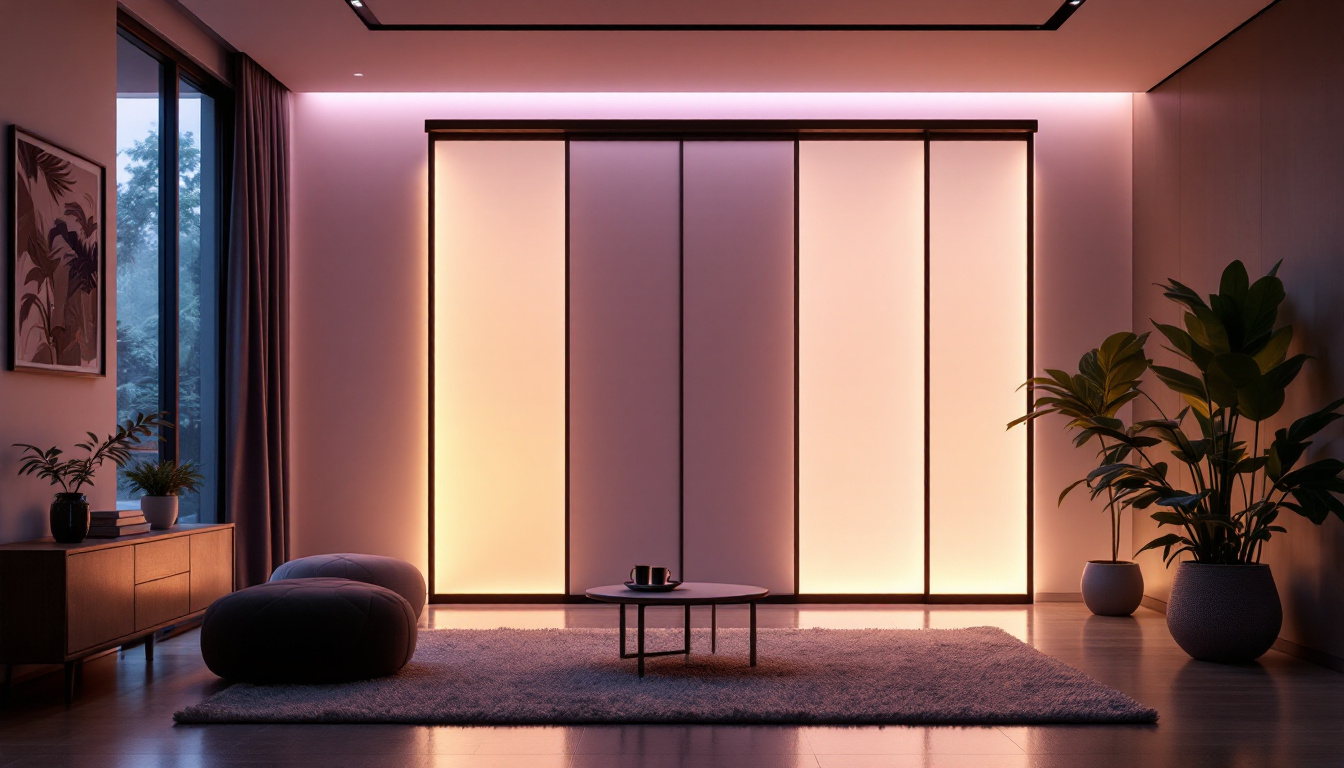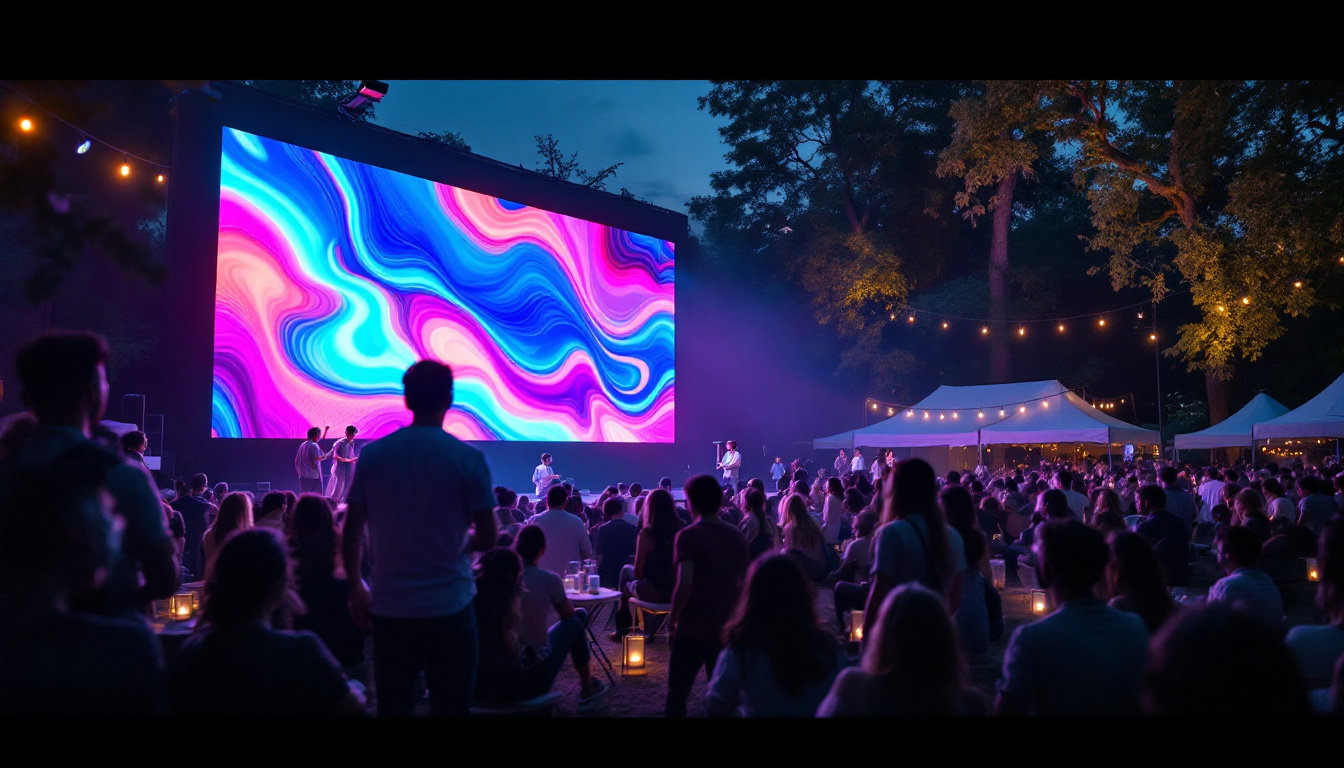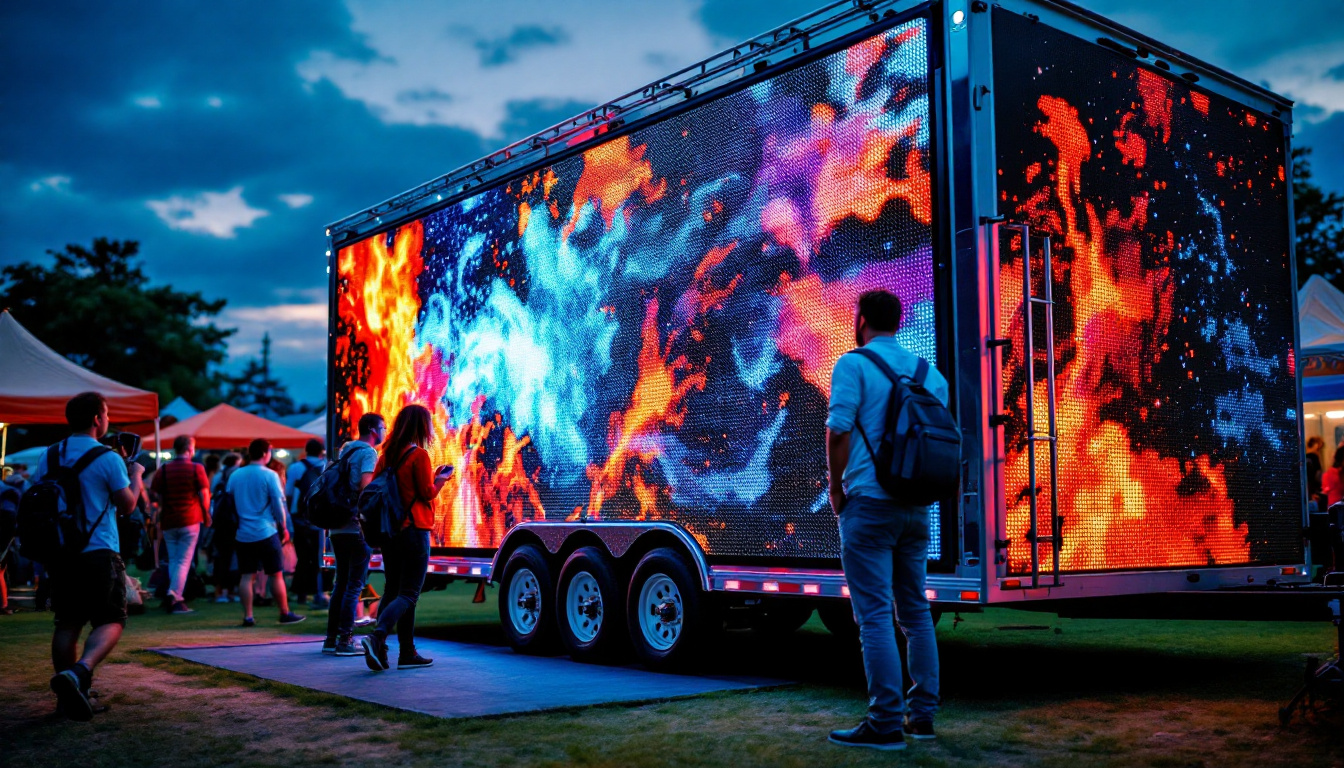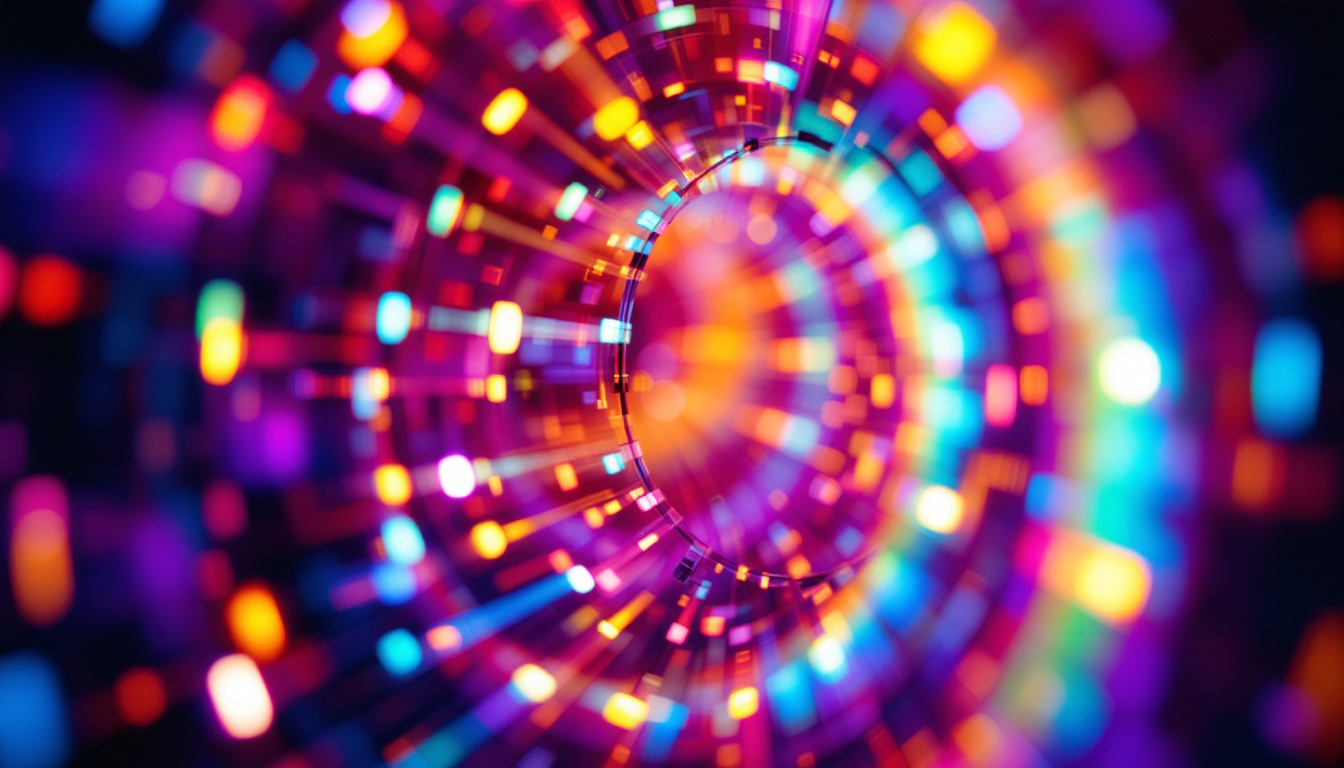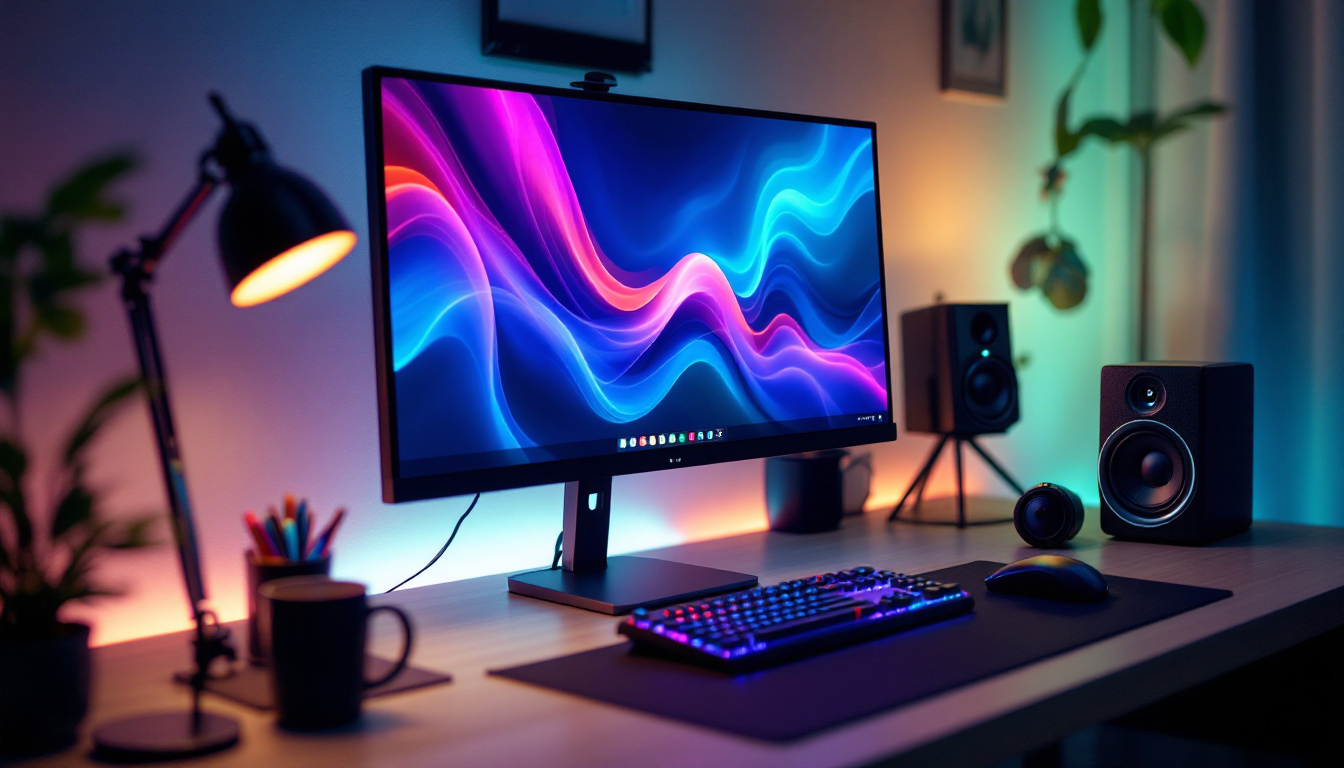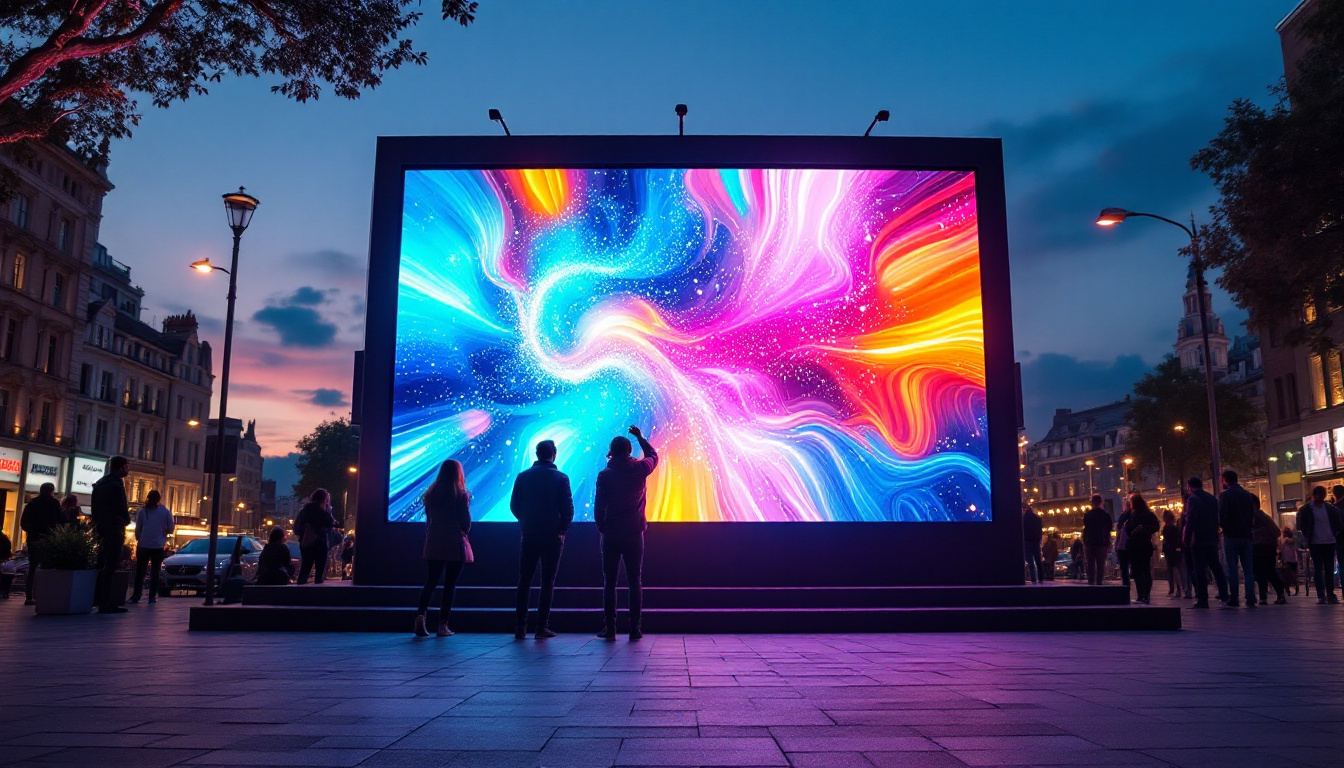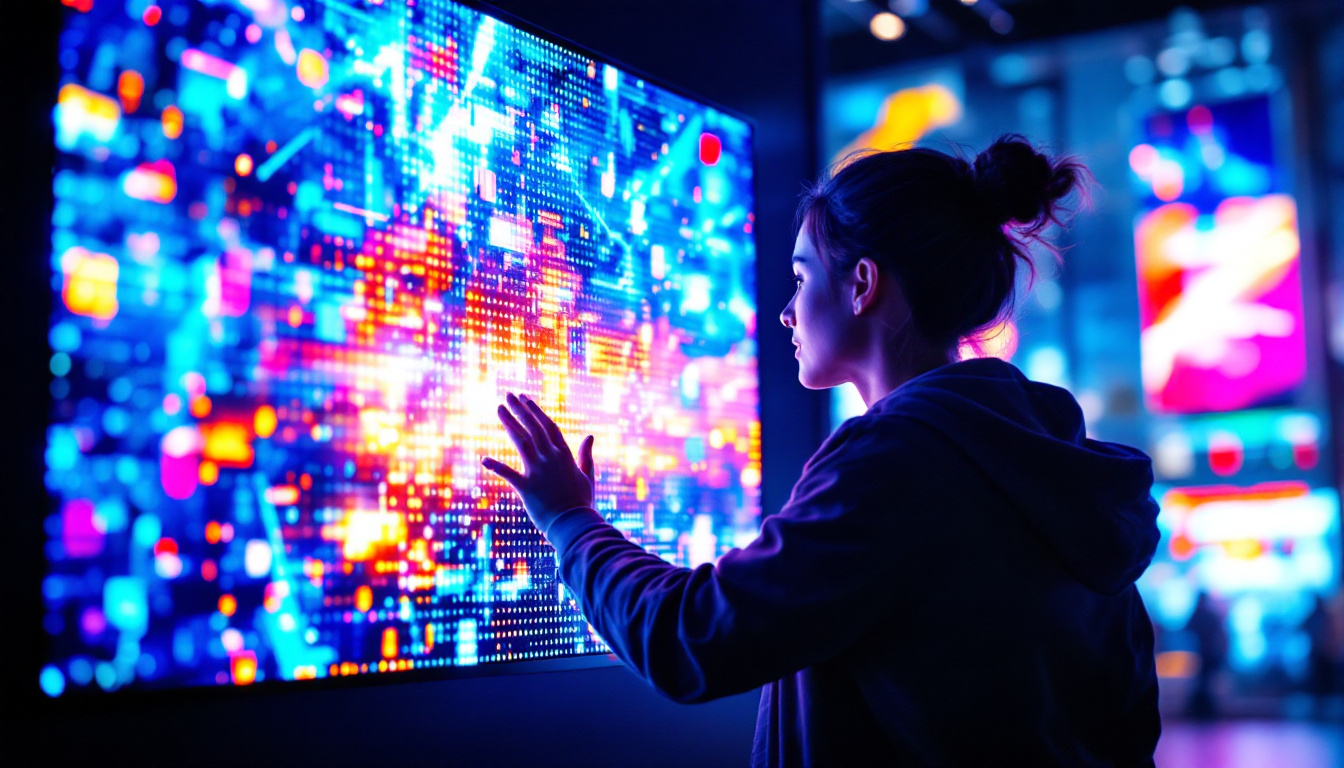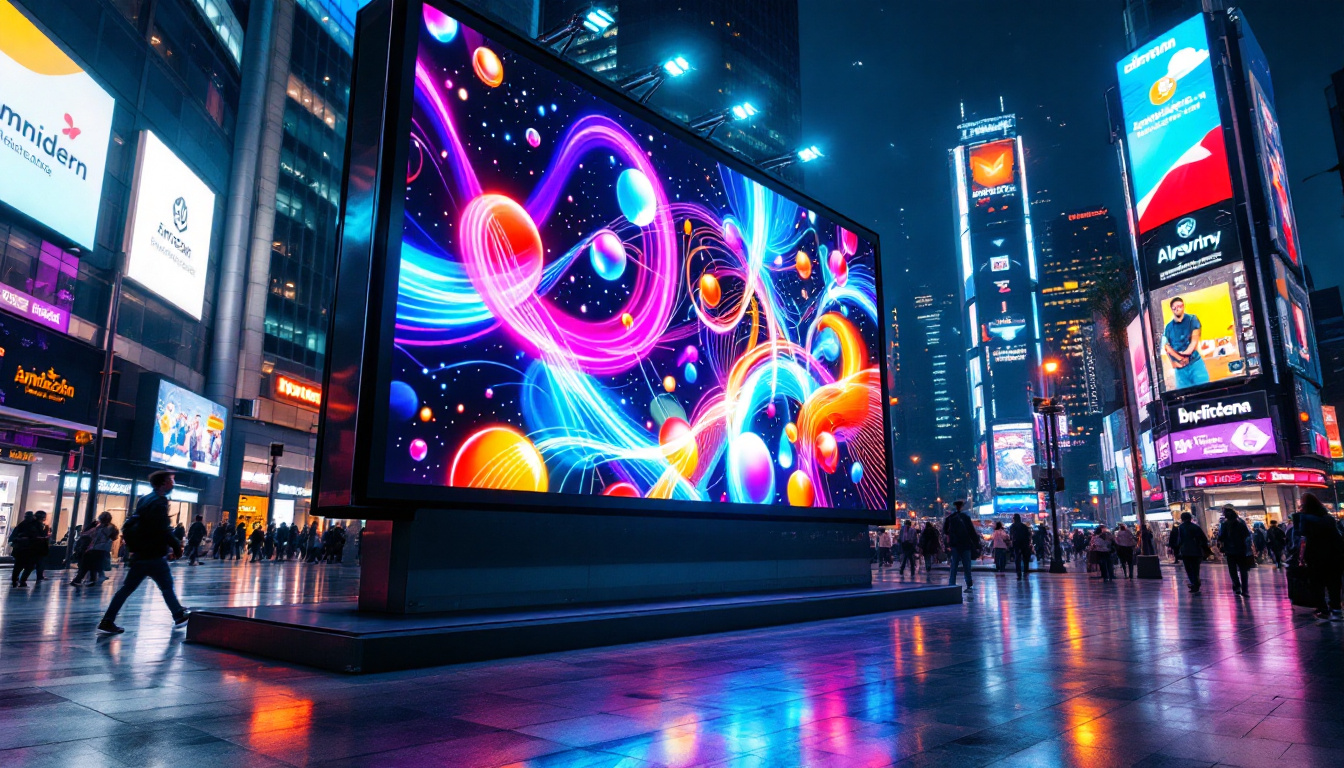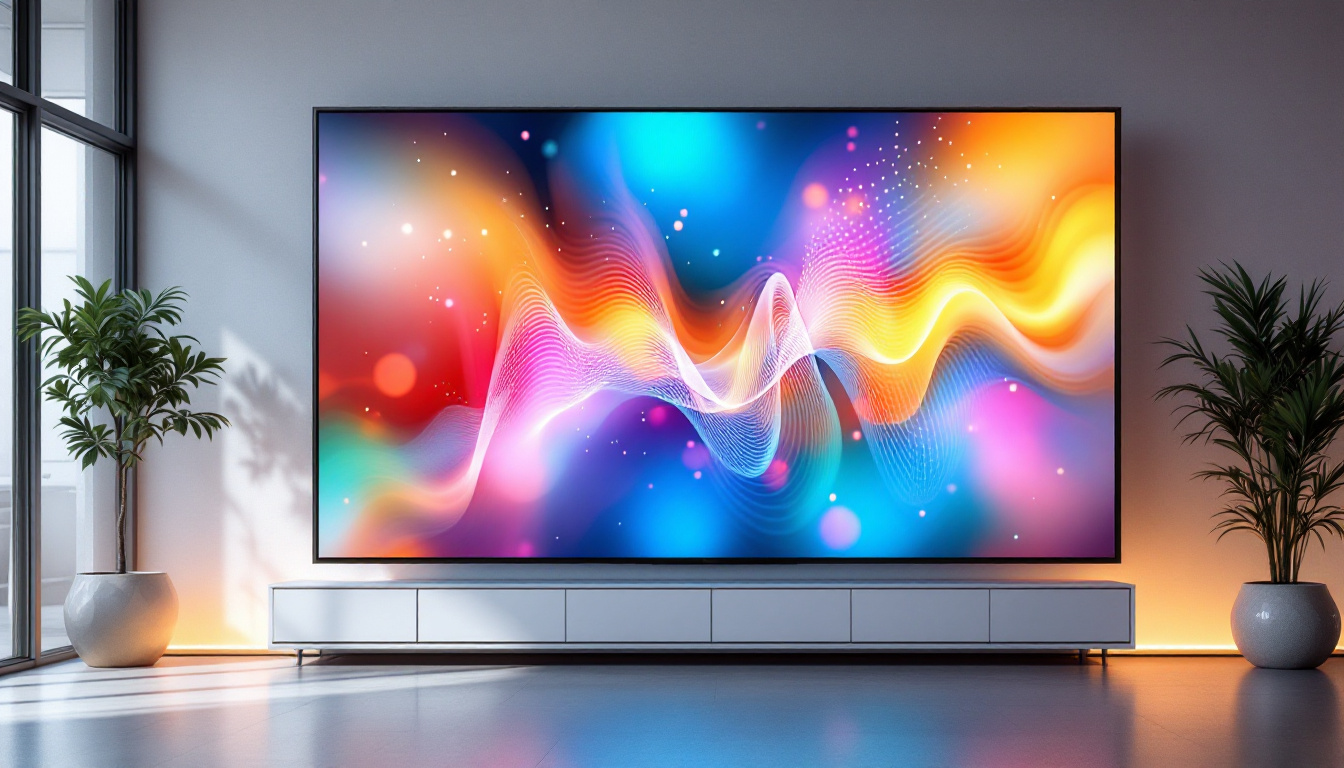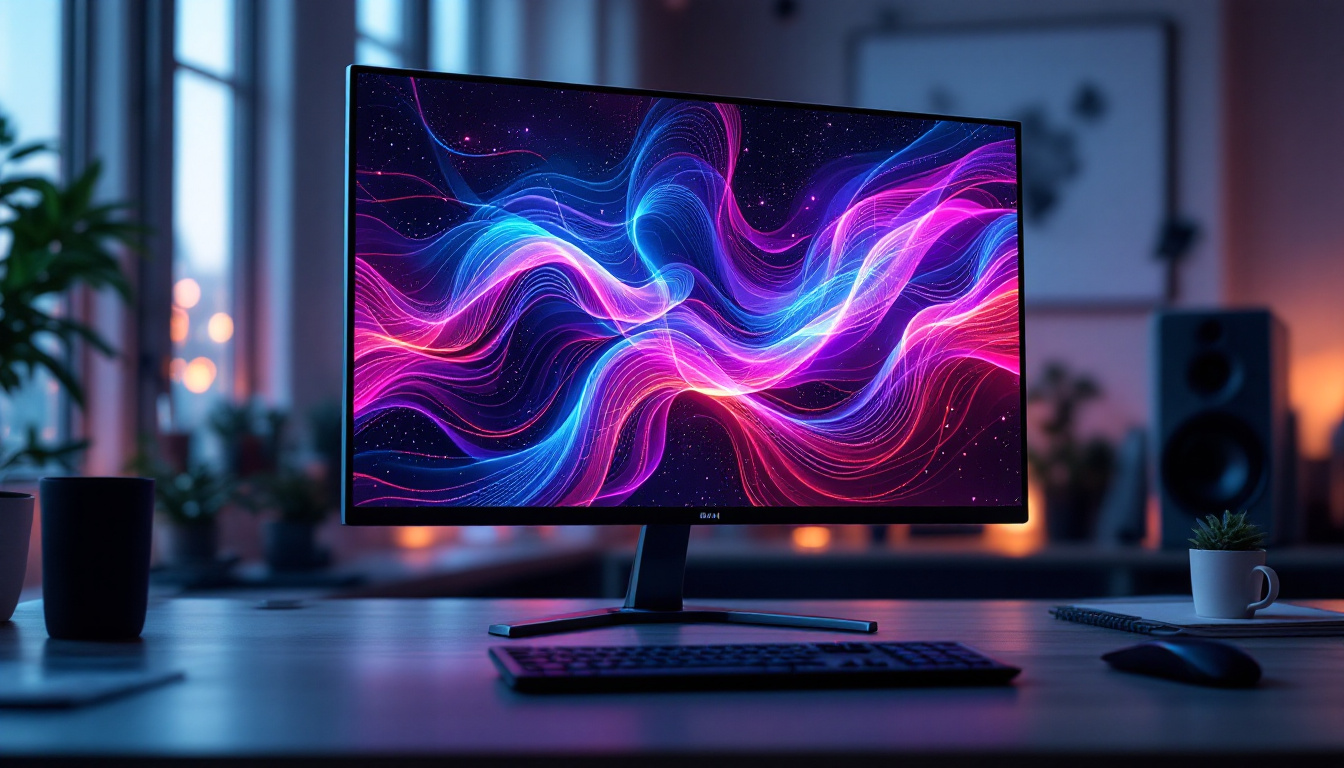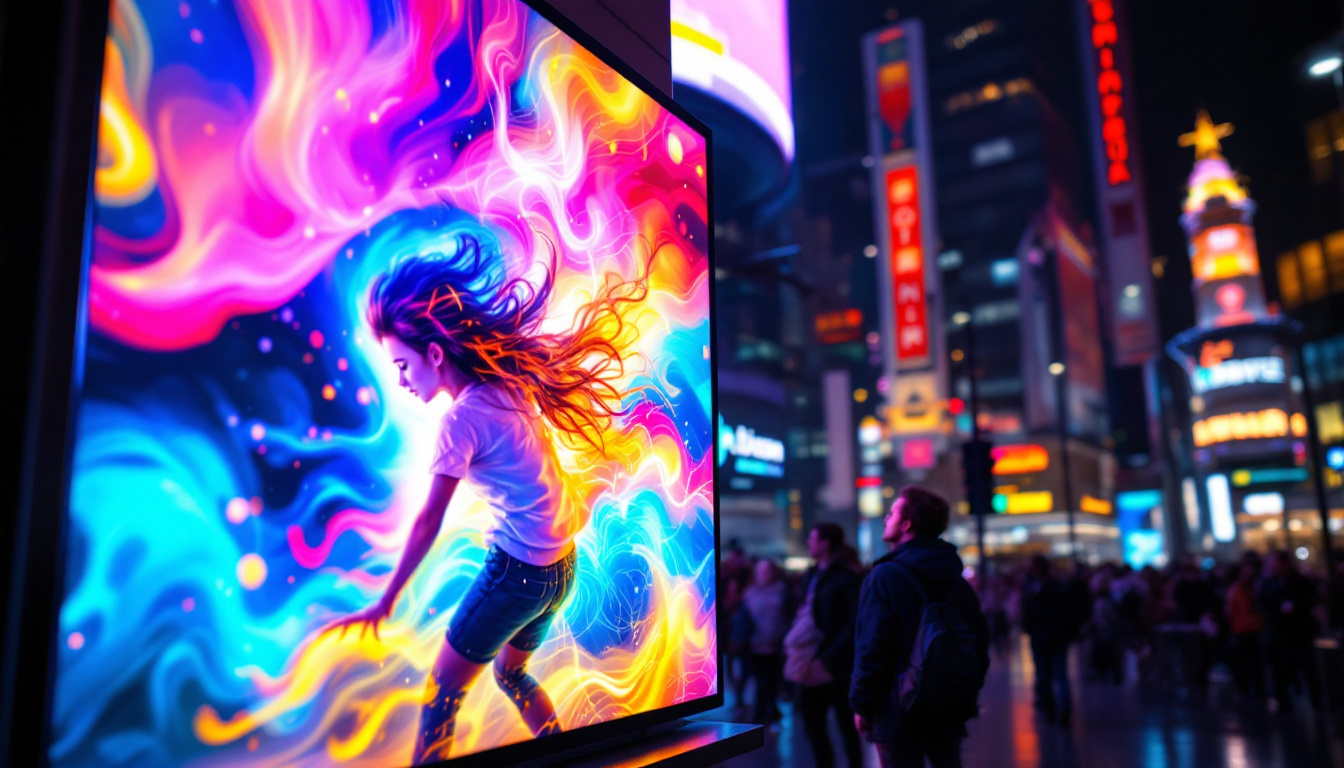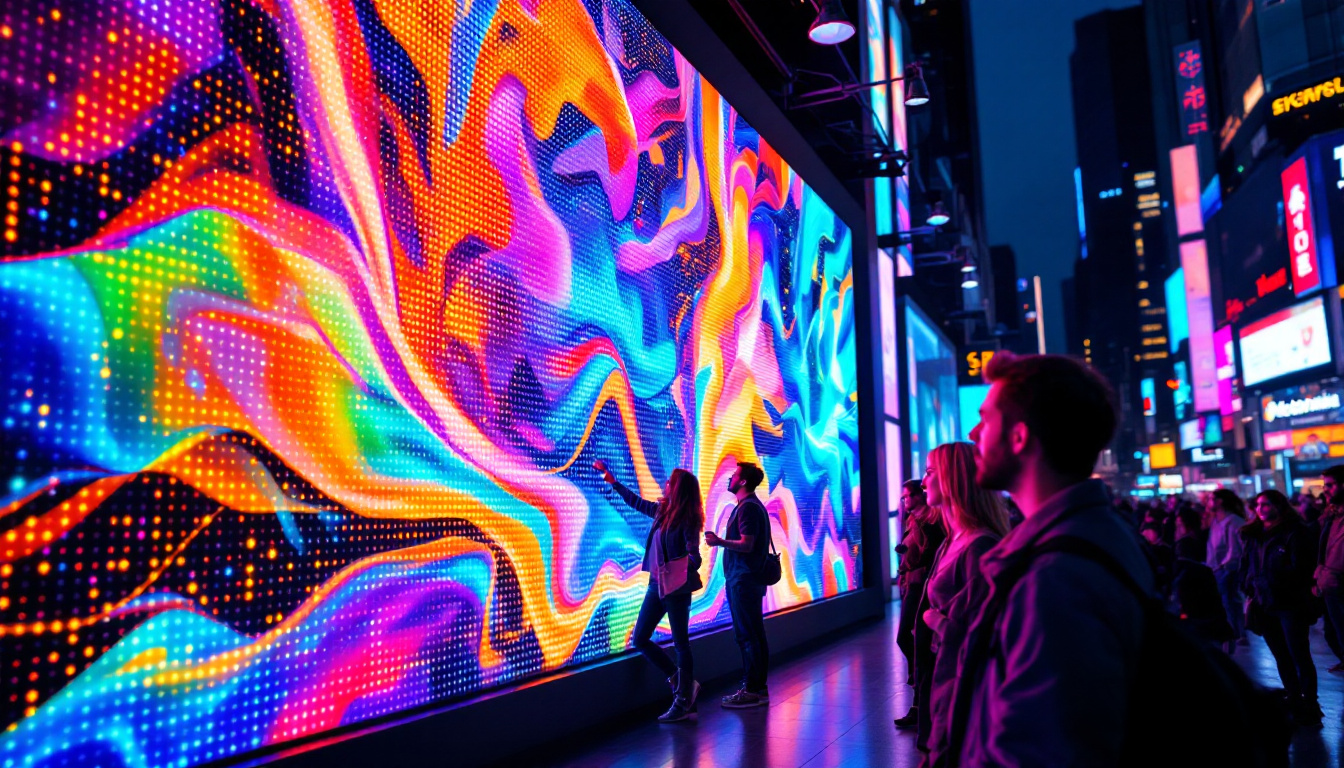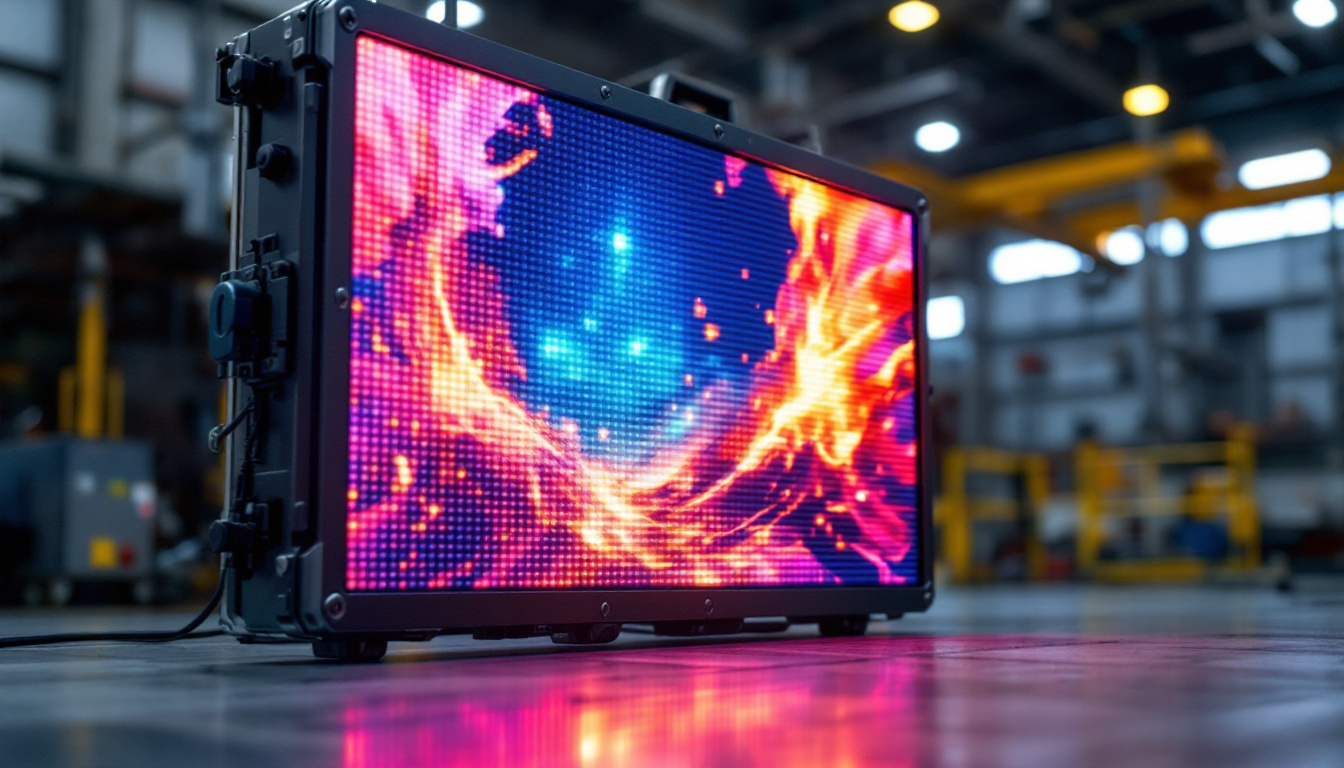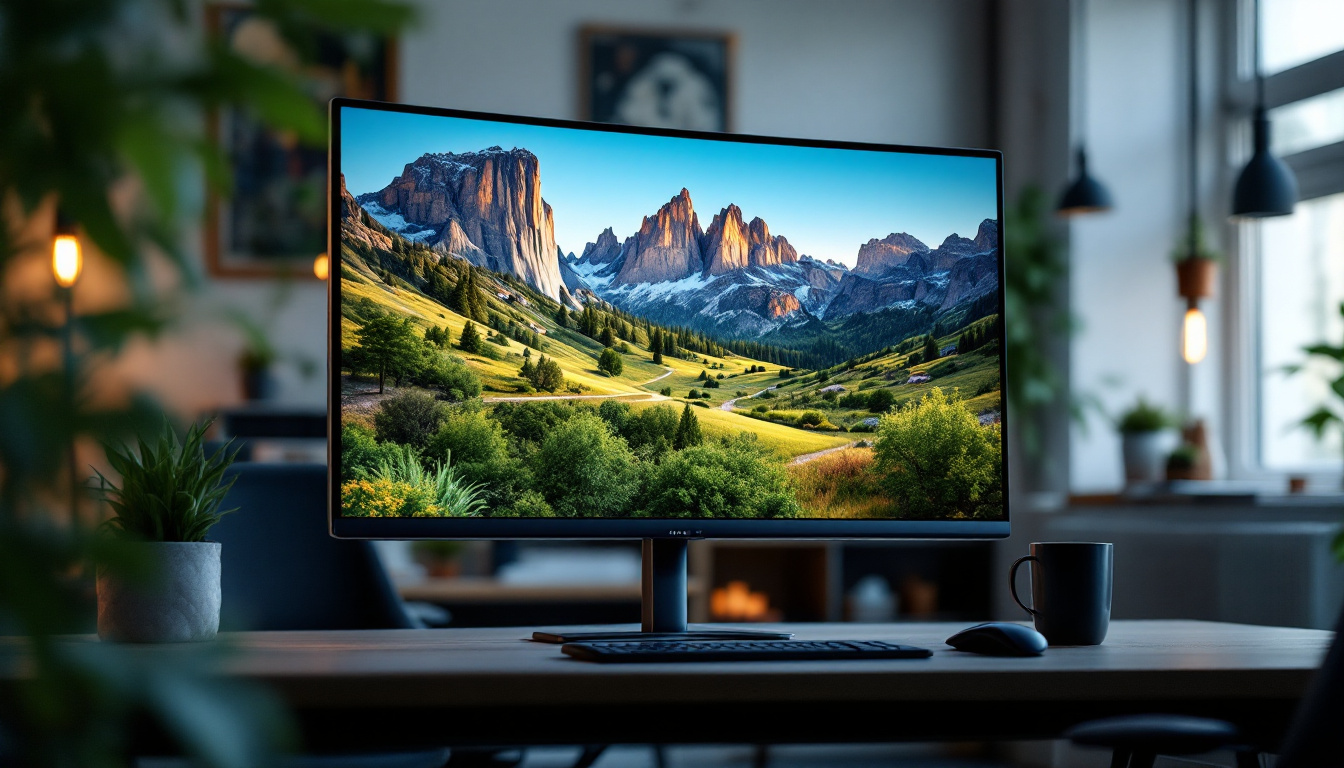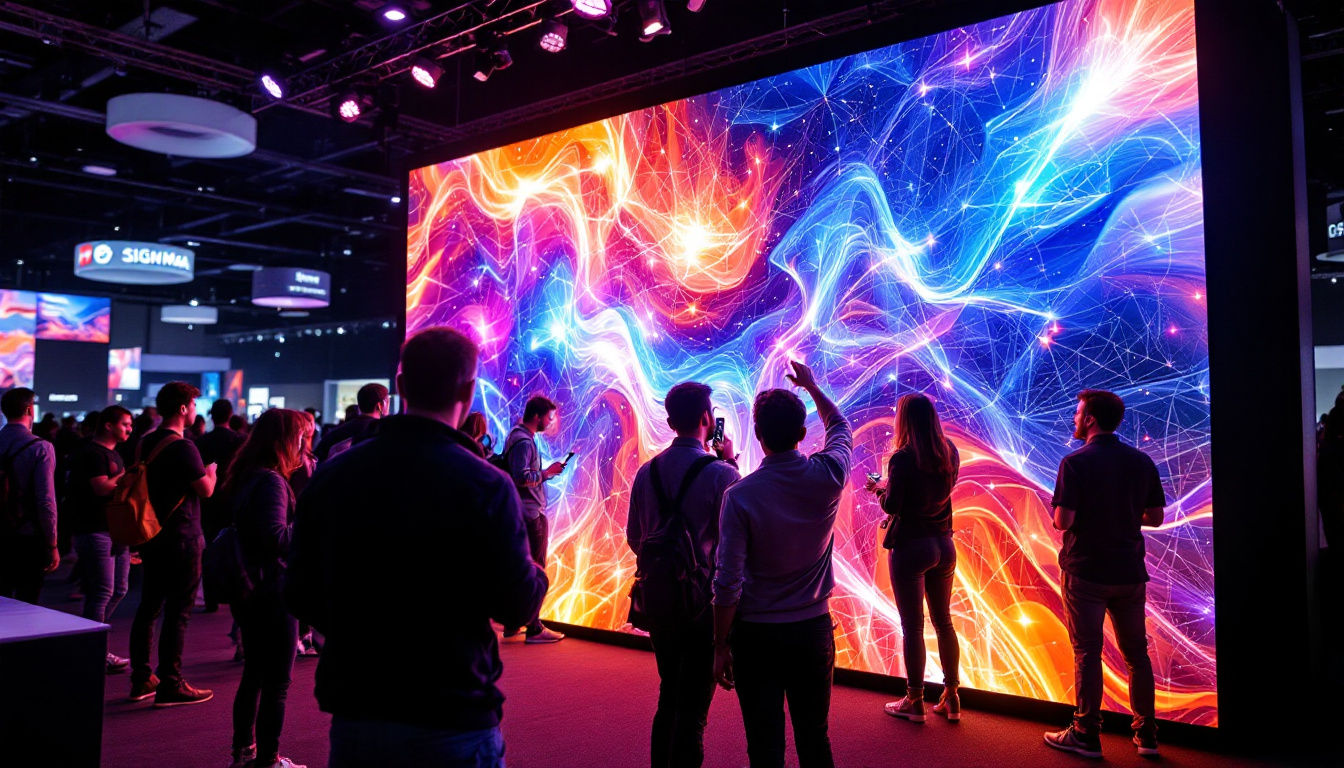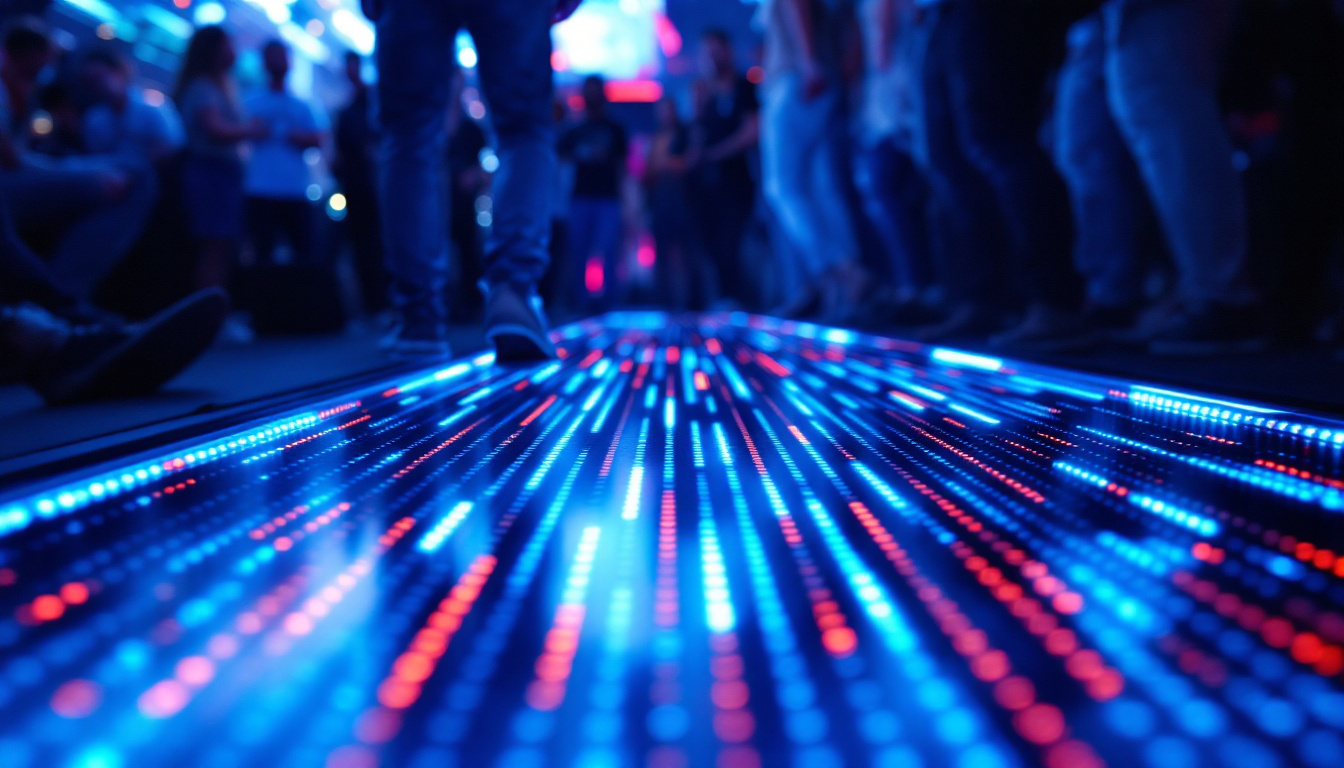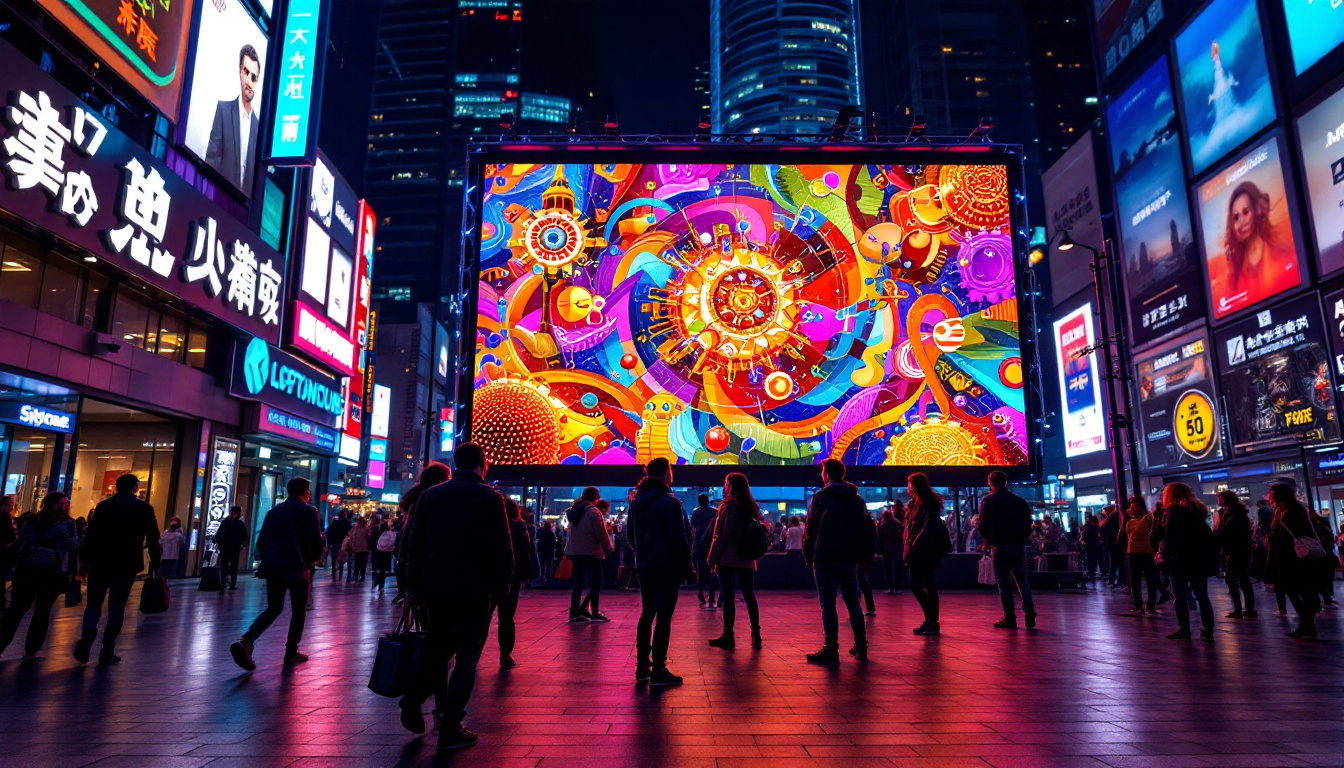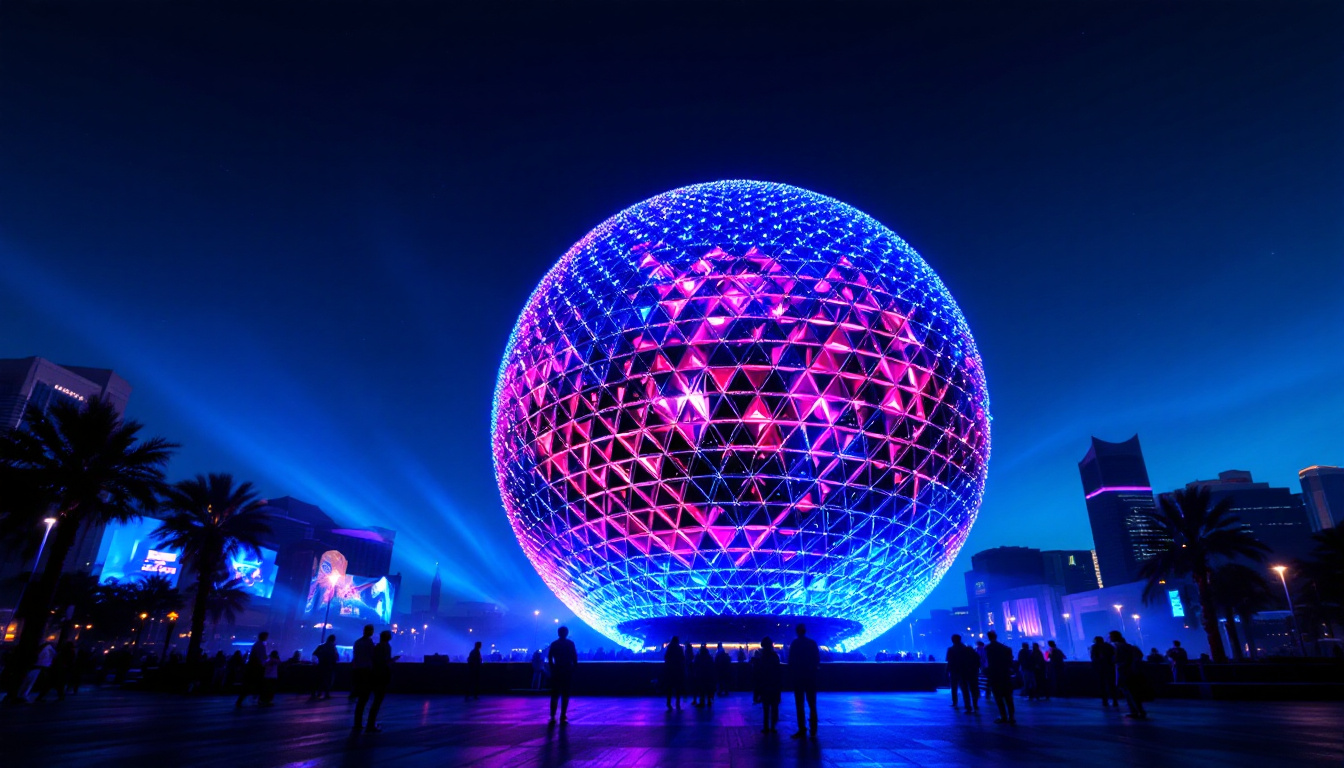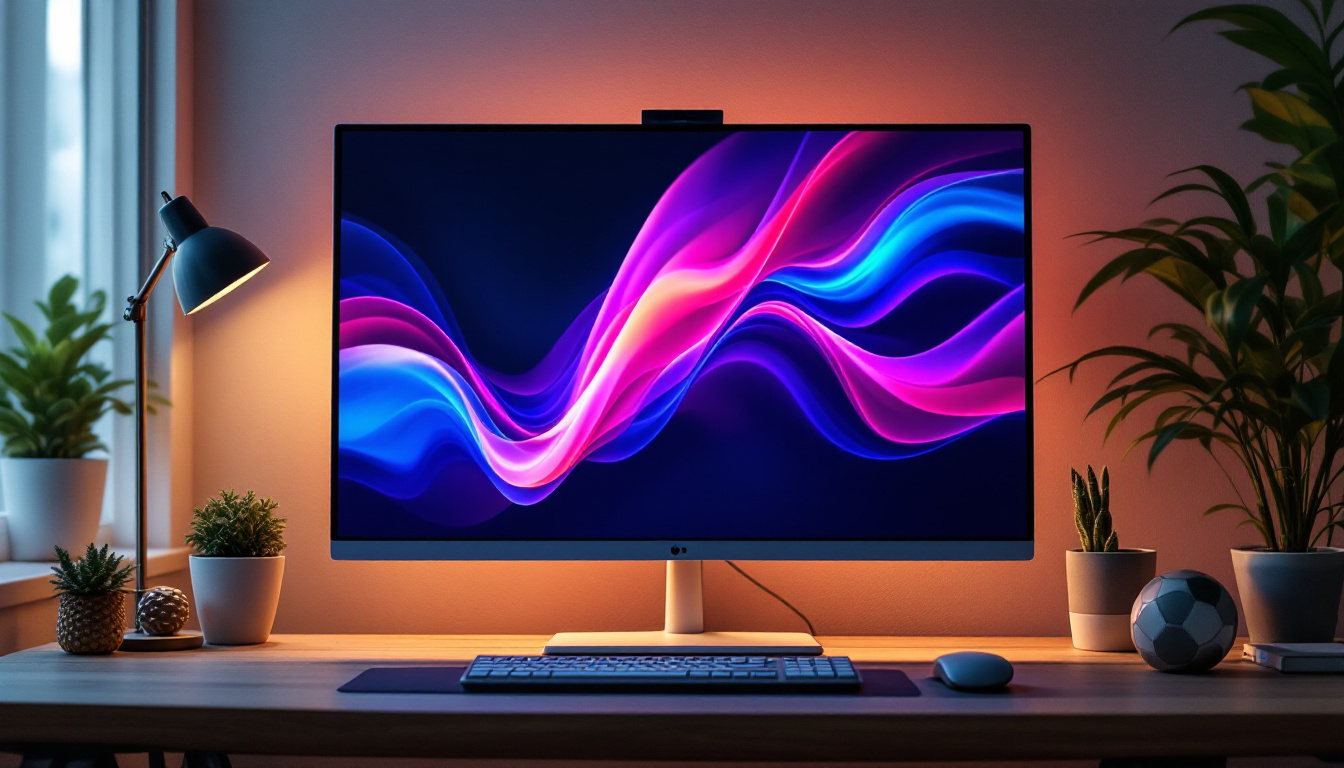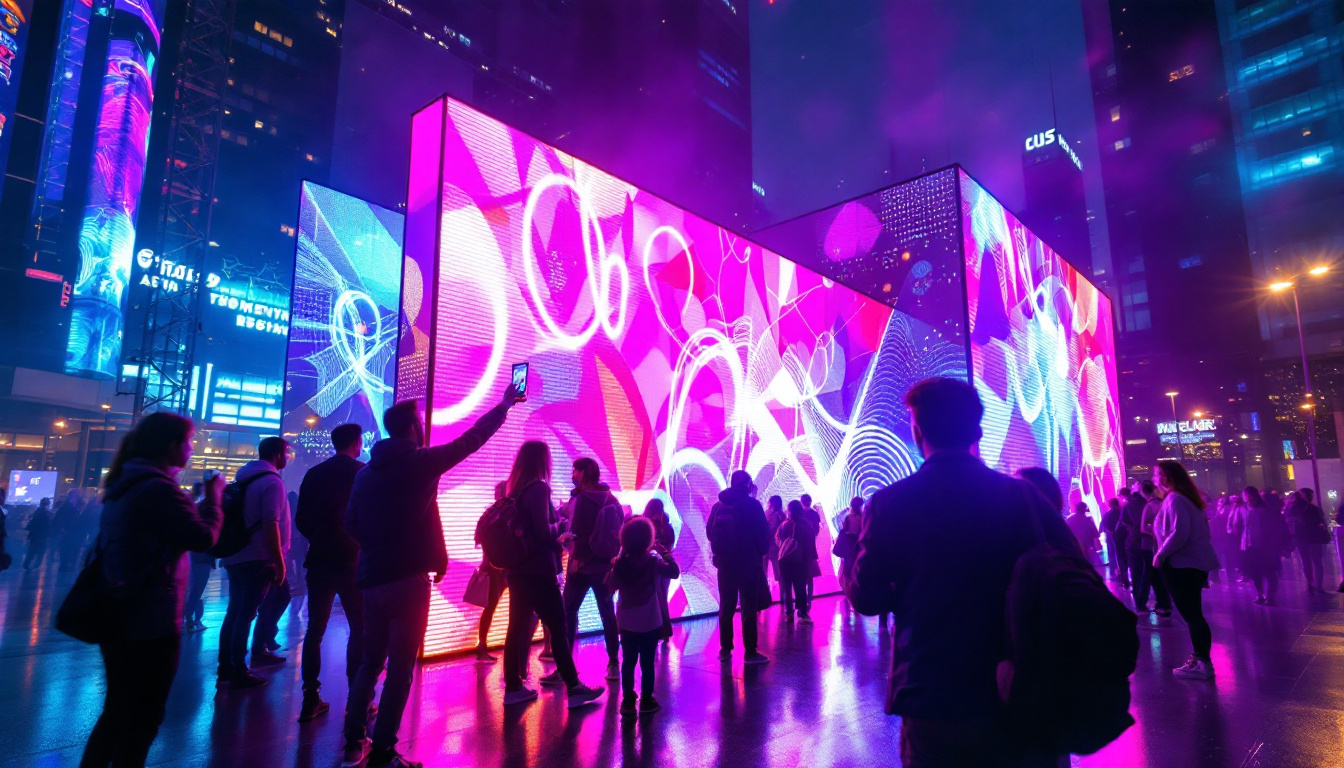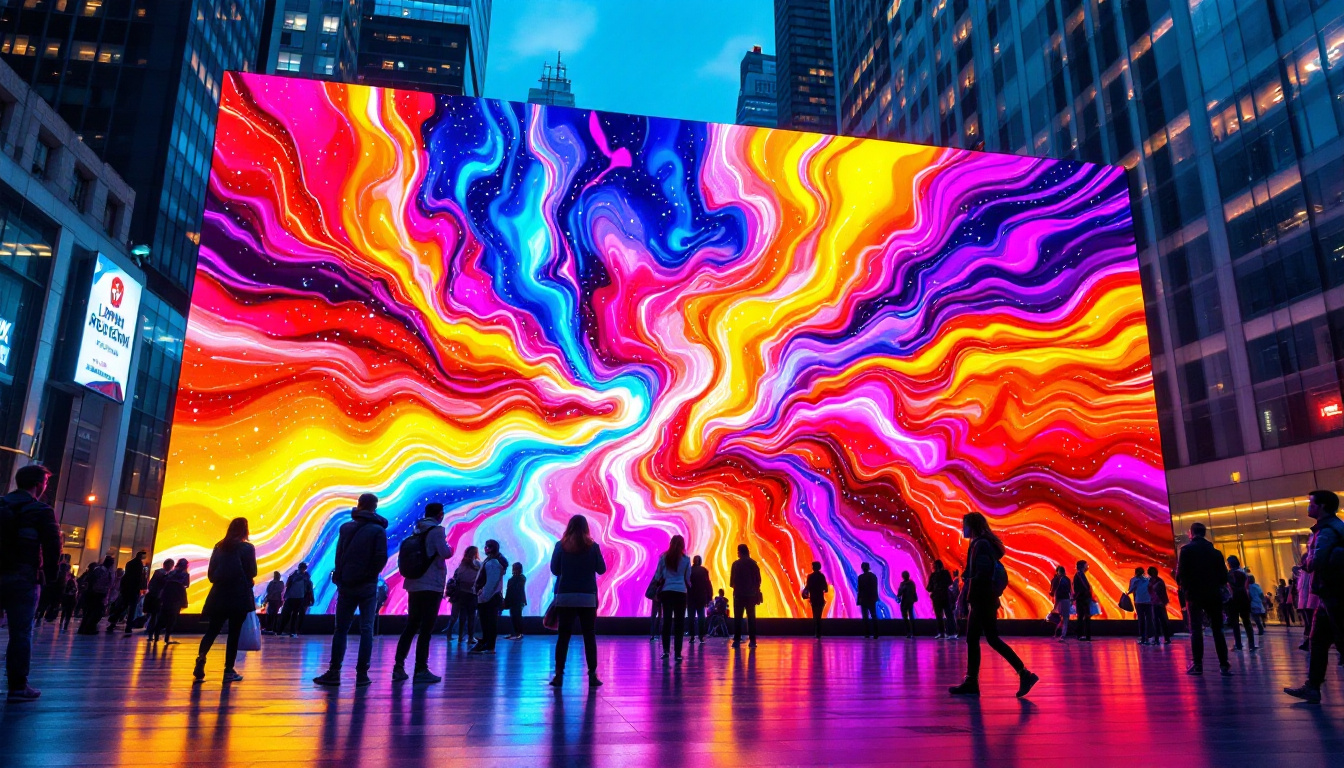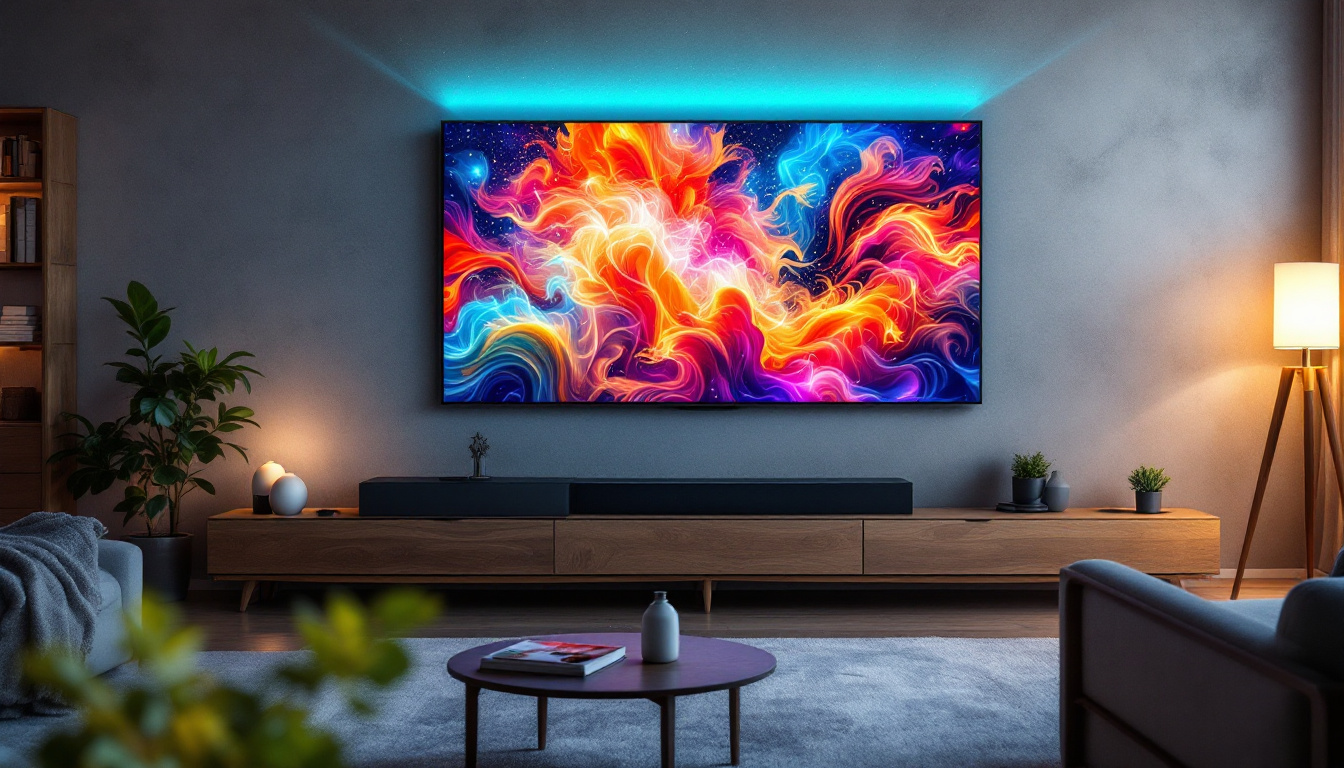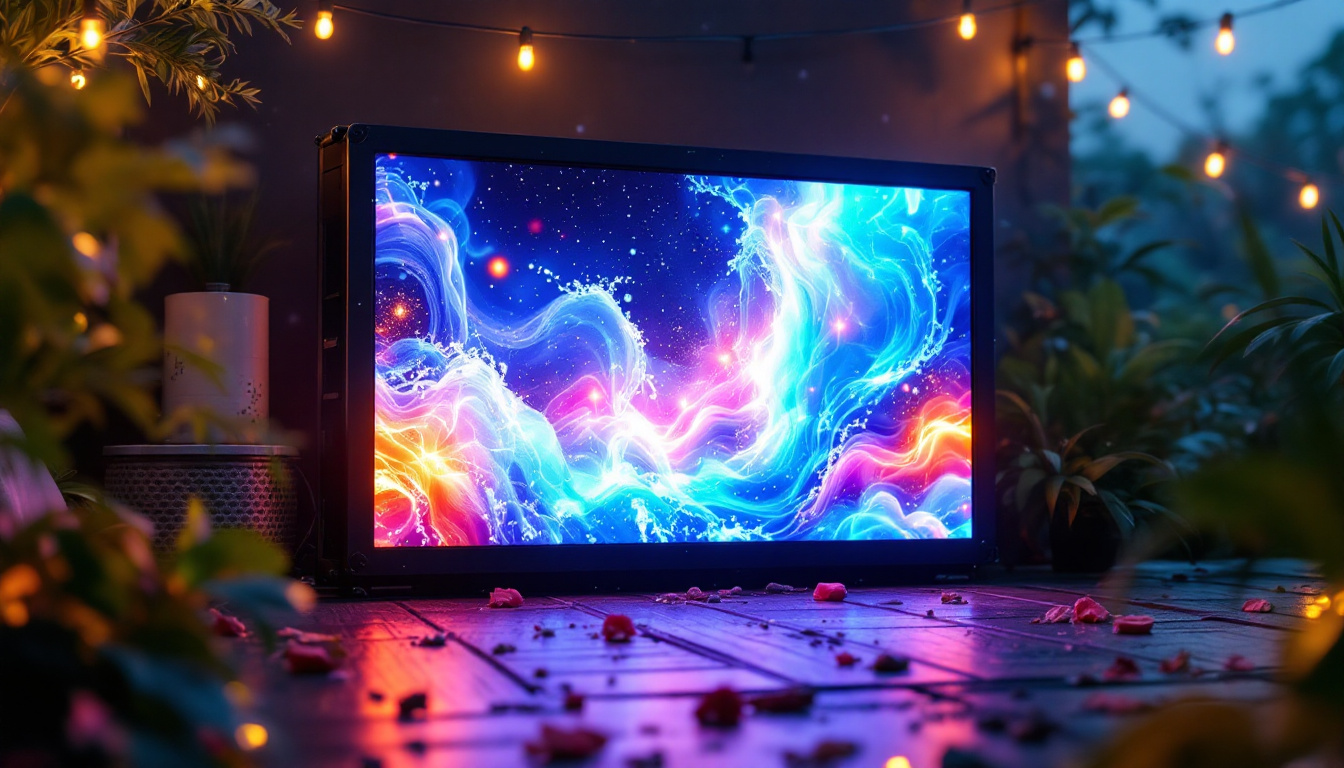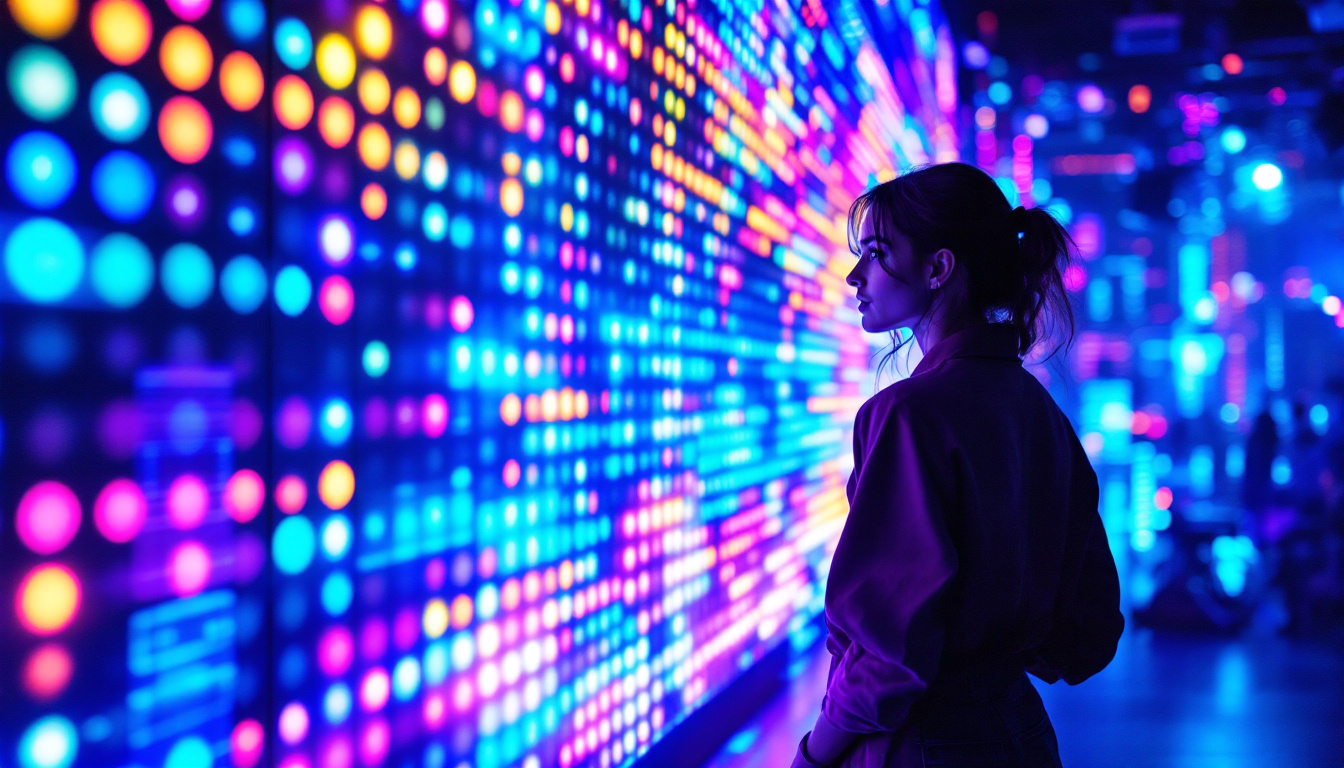In the realm of modern technology, flat panel screens have revolutionized the way we view content, from television shows to video games and everything in between. Among the various types of flat panel displays, LED (Light Emitting Diode) technology stands out for its efficiency, brightness, and overall picture quality. This article delves into the intricacies of LED displays, exploring their advantages, working principles, and the different types available in the market.
Understanding LED Technology
LED displays are a type of flat panel screen that utilizes light-emitting diodes to produce images. Unlike traditional LCD (Liquid Crystal Display) screens that rely on fluorescent backlighting, LED screens use an array of tiny diodes to create vibrant colors and deeper blacks. This fundamental shift in technology has led to significant advancements in display quality and energy efficiency. The energy savings are particularly noteworthy; LED displays consume less power than their LCD counterparts, making them a more environmentally friendly choice for consumers and businesses alike.
How LED Displays Work
The core principle behind LED displays involves the use of semiconductor materials that emit light when an electric current passes through them. Each pixel on an LED screen is made up of individual diodes that can emit red, green, or blue light. By varying the intensity of these colors, a wide spectrum of hues can be achieved, resulting in stunning visuals. This capability allows for not just vibrant images but also the potential for dynamic content, such as video and animations, to be displayed with remarkable clarity.
In most LED displays, the diodes are arranged in either a direct-lit or edge-lit configuration. Direct-lit LED displays have diodes placed behind the screen, providing uniform brightness across the entire display. In contrast, edge-lit displays have diodes located along the edges of the screen, which can lead to thinner designs but may result in uneven brightness in some cases. The choice between these configurations often depends on the intended use of the display, with direct-lit options typically favored for environments where consistent lighting is crucial, such as in professional video editing or graphic design.
Types of LED Displays
There are several types of LED displays, each catering to different needs and preferences. The most common types include:
- Standard LED: This is the most basic form of LED display, utilizing RGB diodes to create images.
- OLED (Organic LED): A more advanced technology where each pixel emits its own light, resulting in better contrast and color accuracy.
- QLED (Quantum Dot LED): This type incorporates quantum dots to enhance color reproduction and brightness.
In addition to these common types, there are also specialized LED displays designed for specific applications. For instance, MicroLED technology, which uses microscopic LEDs to create images, offers even greater brightness and energy efficiency, making it an exciting option for future display innovations. Furthermore, transparent LED displays are emerging, allowing for creative installations where the screen can blend seamlessly into its surroundings, such as in retail environments or architectural designs. These advancements not only enhance the visual experience but also open up new possibilities for interactive and immersive displays in various industries.
Advantages of LED Displays
LED displays offer a plethora of advantages over traditional display technologies. Their benefits extend beyond just aesthetics; they also enhance user experience and energy efficiency.
Superior Picture Quality
One of the most significant advantages of LED displays is their superior picture quality. The ability to produce deeper blacks and brighter whites allows for greater contrast ratios, making images appear more lifelike. The vibrant colors generated by LED technology also contribute to a more immersive viewing experience, whether watching a movie or playing a video game.
Energy Efficiency
Compared to older display technologies, LED screens are considerably more energy-efficient. They consume less power while providing higher brightness levels, which is particularly beneficial for large displays or extended viewing sessions. This energy efficiency not only helps reduce electricity bills but also contributes to a smaller carbon footprint.
Thin and Lightweight Design
Another notable advantage of LED displays is their slim and lightweight design. This makes them ideal for various applications, from wall-mounted televisions to portable devices. The reduced weight and thickness also allow for more flexible installation options, making it easier to integrate them into different environments.
Applications of LED Displays
LED displays are versatile and can be found in a wide range of applications. Their adaptability makes them suitable for both personal and professional use.
Home Entertainment
In the realm of home entertainment, LED displays have become the standard for televisions. Their ability to deliver stunning visuals and vibrant colors enhances the viewing experience, making them ideal for movie nights and gaming sessions. Many consumers prefer LED TVs for their superior performance and sleek designs.
Commercial Use
Beyond personal use, LED displays play a vital role in commercial settings. They are commonly used in advertising, where bright and eye-catching visuals can attract customers’ attention. digital billboards and signage are often powered by LED technology, providing businesses with a dynamic way to promote their products and services.
Professional Applications
In professional environments, LED displays are utilized for presentations, conferences, and events. Their clarity and brightness make them suitable for large audiences, ensuring that everyone can see the content being presented. Additionally, LED screens are often used in control rooms and monitoring stations, where real-time data visualization is crucial.
Choosing the Right LED Display
With a variety of LED displays available on the market, selecting the right one can be a daunting task. Several factors should be considered to ensure that the chosen display meets specific needs and preferences.
Screen Size and Resolution
The size of the screen is one of the most important considerations. Larger screens provide a more immersive experience, but the appropriate size depends on the viewing distance and the space available. Additionally, resolution plays a crucial role in picture quality. Higher resolutions, such as 4K and 8K, offer sharper images and finer details, making them ideal for larger displays.
Refresh Rate and Response Time
For gaming and fast-paced content, the refresh rate and response time of the display are critical. A higher refresh rate, measured in Hertz (Hz), results in smoother motion, while a lower response time minimizes motion blur. These factors are particularly important for gamers who require a responsive and fluid experience.
Connectivity Options
Modern LED displays come equipped with various connectivity options, including HDMI, USB, and wireless capabilities. Ensuring that the display has the necessary ports for connecting devices such as gaming consoles, streaming devices, or computers is essential for a seamless experience. Additionally, smart features that enable internet connectivity and app access can enhance functionality.
Maintenance and Care for LED Displays
To ensure the longevity and optimal performance of LED displays, proper maintenance and care are essential. Following a few simple guidelines can help preserve the quality of the screen.
Cleaning the Screen
Regular cleaning of the screen is vital to maintain clarity and prevent dust buildup. It is recommended to use a microfiber cloth and a gentle cleaning solution specifically designed for electronics. Avoid using abrasive materials or harsh chemicals, as these can damage the screen’s surface.
Optimal Settings
Adjusting the display settings can also enhance the viewing experience. Calibrating brightness, contrast, and color settings according to personal preference can lead to improved picture quality. Many LED displays come with preset modes for different viewing environments, such as cinema or gaming modes, which can be beneficial.
Proper Placement
Placement of the LED display can significantly impact viewing quality. Positioning the screen at eye level and ensuring that it is away from direct sunlight can help reduce glare and improve visibility. Additionally, maintaining a safe distance from heat sources can prevent potential damage to the display.
Future of LED Display Technology
The future of LED display technology looks promising, with continuous advancements and innovations on the horizon. As demand for higher-quality visuals and energy-efficient solutions grows, manufacturers are exploring new ways to enhance LED technology.
MicroLED Technology
One of the most exciting developments in the field is MicroLED technology. This emerging technology utilizes microscopic LEDs to create displays that offer even better contrast, color accuracy, and energy efficiency than traditional LED displays. MicroLED screens are also modular, allowing for customizable sizes and shapes, which opens up new possibilities for design and application.
Integration with AI and Smart Features
As smart technology becomes increasingly integrated into everyday life, LED displays are also evolving. The incorporation of artificial intelligence (AI) into display technology can lead to enhanced user experiences, such as automatic calibration, content recommendations, and improved connectivity. These advancements will make LED displays even more versatile and user-friendly.
Sustainability Initiatives
With growing concerns about environmental impact, manufacturers are focusing on sustainability initiatives. This includes developing energy-efficient displays, utilizing recyclable materials, and implementing eco-friendly production processes. As consumers become more environmentally conscious, these efforts will play a crucial role in shaping the future of LED display technology.
Conclusion
LED displays have transformed the way we experience visual content, offering superior picture quality, energy efficiency, and versatility. From home entertainment systems to commercial applications, the impact of LED technology is profound and far-reaching. As advancements continue to shape the future of display technology, consumers can expect even more innovative solutions that enhance their viewing experiences while promoting sustainability.
In summary, understanding the intricacies of LED displays empowers consumers to make informed choices, ensuring they select the right technology that meets their needs. Whether for personal use or professional applications, LED displays are here to stay, continuing to redefine the standards of visual excellence.
Discover the Future of Visual Experience with LumenMatrix
Ready to elevate your visual experience with the latest in LED display technology? LumenMatrix is at the forefront of innovation, offering a diverse range of LED display solutions tailored to your unique needs. From captivating Indoor LED Walls to dynamic Outdoor LED Displays, and from versatile Vehicle LED Displays to sleek LED Poster Displays, our products are designed to revolutionize visual communication. Immerse your audience with our LED Sports Displays, Floor LED Displays, and Custom LED solutions, or streamline your message with our All-in-One and Transparent LED Displays. Experience the pinnacle of engagement and brand visibility. Check out LumenMatrix LED Display Solutions today and transform the way you share your message with the world.

